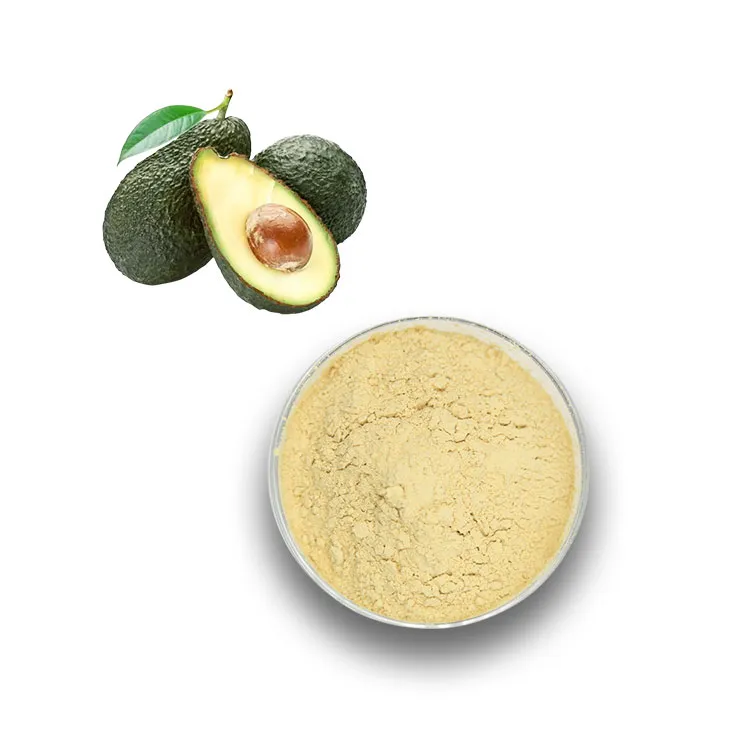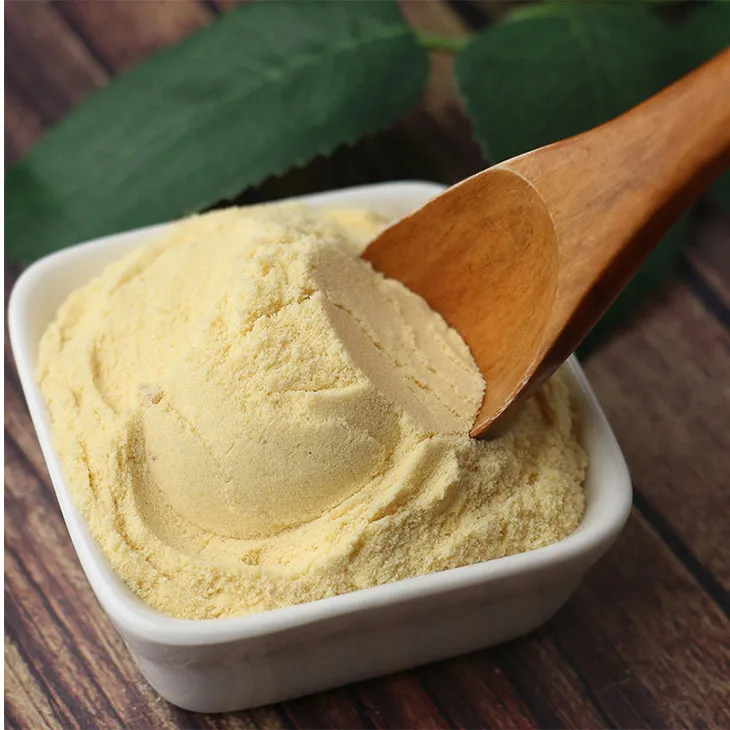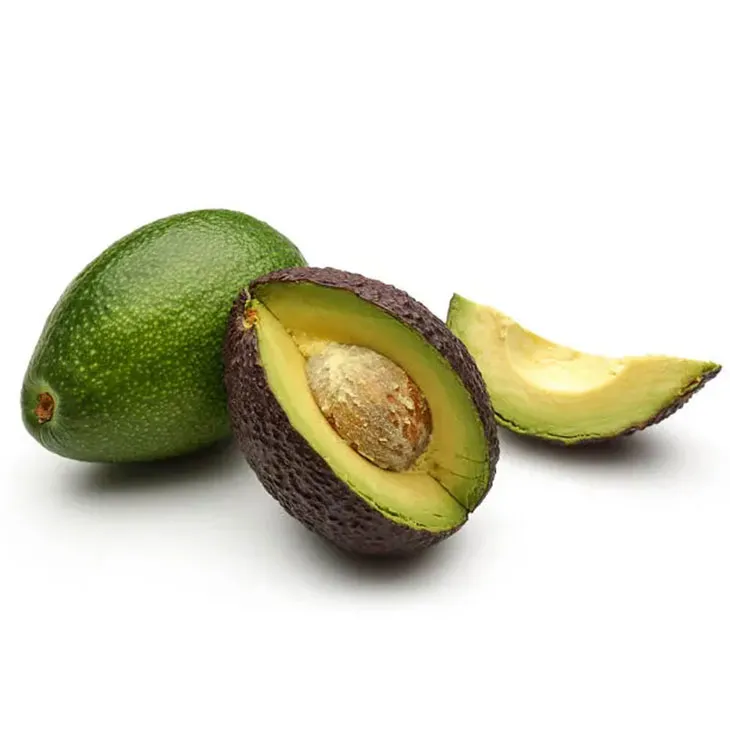- 0086-571-85302990
- sales@greenskybio.com
Extraction Technology and Production Process of Avocado Extract Powder
2024-11-29

1. Introduction
Avocado, also known as alligator pear, is a highly nutritious fruit. Avocado Extract Powder has gained significant attention in various industries due to its rich content of healthy fats, vitamins, minerals, and bioactive compounds. The extraction technology and production process play a crucial role in obtaining a high - quality Avocado Extract Powder with optimal efficacy.

2. Extraction Principles
2.1 Targeting Key Components
Avocados contain a variety of components, such as oleic acid, vitamins (e.g., vitamin E, vitamin K), and phenolic compounds. The extraction process aims to isolate and concentrate these key components. For example, oleic acid is a monounsaturated fatty acid that has beneficial effects on heart health. The extraction technology should be designed in such a way that it can effectively separate oleic acid from other components in the avocado. Vitamins and phenolic compounds also contribute to the antioxidant and anti - inflammatory properties of the Avocado Extract Powder. Therefore, during extraction, the focus is on maximizing the recovery of these valuable substances.
2.2 Selecting Appropriate Solvents
The choice of solvent is critical in the extraction process. Different solvents have different affinities for the components in avocados. Organic solvents such as hexane, ethanol, and ethyl acetate are commonly used. Hexane is a non - polar solvent that is effective in extracting lipids, including oleic acid. Ethanol, on the other hand, is a polar solvent that can extract both polar and non - polar components. It is also considered a "green" solvent compared to some other organic solvents, as it is less toxic and more environmentally friendly. Ethyl acetate is another option that has intermediate polarity and can be used for the extraction of specific components. The selection of the solvent depends on the target components and the desired properties of the extract powder.

3. Enzyme - Assisted Extraction
3.1 Mechanism of Enzyme - Assisted Extraction
Enzyme - assisted extraction is a promising method in the production of avocado extract powder. Enzymes can break down the cell walls of avocado tissues, which are composed mainly of cellulose, hemicellulose, and pectin. For example, cellulase enzymes can hydrolyze cellulose, while pectinase enzymes can break down pectin. By breaking down these cell wall components, the enzymes release the intracellular components more effectively. This results in a higher yield of the desired substances compared to traditional extraction methods. The use of enzymes also reduces the need for harsh extraction conditions, such as high temperature and high pressure, which can be beneficial for maintaining the integrity and functionality of the extracted components.
3.2 Selection of Enzymes
The selection of enzymes depends on the composition of the avocado tissues. In addition to cellulase and pectinase, other enzymes such as protease may also be used depending on the presence of proteins in the avocados. Commercially available enzyme preparations are often used, which are formulated to have optimal activity under specific conditions. The enzyme concentration, reaction time, and reaction temperature need to be carefully controlled to ensure the best extraction results. For example, a too - high enzyme concentration may lead to excessive degradation of the components, while a too - low concentration may not achieve sufficient cell wall breakdown.

4. Production Process
4.1 Pretreatment of Avocados
Before extraction, avocados need to be pretreated. This includes washing to remove dirt and impurities, followed by peeling and removal of the pit. The avocado flesh is then typically chopped or mashed to increase the surface area for extraction. Pretreatment also involves quality control, such as removing overripe or damaged parts of the avocados. This ensures that only high - quality avocado material is used for extraction, which is important for the quality of the final extract powder.
4.2 Extraction
- Once the avocados are pretreated, the extraction process can begin. If using solvent extraction, the pretreated avocado material is mixed with the selected solvent in an appropriate ratio. For example, if using ethanol as the solvent, a common ratio may be 1:3 (avocado material: ethanol by weight). The mixture is then stirred or shaken to ensure good contact between the solvent and the avocado components.
- In the case of enzyme - assisted extraction, after adding the enzyme preparation to the mashed avocado, the reaction is carried out at a specific temperature and for a specific time. For instance, the reaction may be carried out at 40 - 50°C for 1 - 3 hours, depending on the enzyme used and the target components. During this process, continuous stirring may be required to ensure uniform reaction.
4.3 Separation and Filtration
After extraction, the next step is separation and filtration. The aim is to separate the extract from the solid residues. This can be achieved through methods such as centrifugation or filtration. Centrifugation can be used to separate the liquid extract from the insoluble solids by spinning the mixture at a high speed. Filtration, on the other hand, uses filters with different pore sizes to remove the solid particles from the extract. For example, a filter with a pore size of 0.2 - 0.45 μm can be used to obtain a relatively pure extract. The separated solid residues can be further processed or discarded depending on their potential value.
4.4 Concentration
The extract obtained from the separation and filtration step usually has a relatively low concentration of the target components. To increase the concentration, methods such as evaporation or vacuum distillation can be used. Evaporation involves heating the extract to evaporate the solvent, thereby increasing the concentration of the components in the remaining liquid. Vacuum distillation is carried out under reduced pressure, which can lower the boiling point of the solvent and reduce the degradation of heat - sensitive components during the concentration process. The concentrated extract is closer to the final form of the avocado extract powder.
4.5 Drying
The final step in the production process is drying. Drying is necessary to convert the concentrated extract into a powder form. There are several drying methods available, such as spray drying, freeze - drying, and tray drying. Spray drying is a commonly used method in the food and pharmaceutical industries. In spray drying, the concentrated extract is sprayed into a hot air stream, where the solvent is rapidly evaporated, leaving behind a fine powder. Freeze - drying is a more gentle drying method that can better preserve the structure and functionality of the components. However, it is more expensive and time - consuming. Tray drying is a simple and low - cost method, but it may take longer and may not result in as fine a powder as spray drying or freeze - drying.

5. Factors Affecting the Production Process
5.1 Temperature
Temperature plays a crucial role in various stages of the production process. During extraction, different temperatures are required depending on the method used. For solvent extraction, a moderate temperature may be sufficient to ensure good solubility of the components in the solvent. However, for enzyme - assisted extraction, the temperature needs to be carefully controlled within the optimal range of the enzyme activity. For example, if the temperature is too high, the enzyme may be denatured and lose its activity, resulting in a lower extraction yield. During concentration and drying, high temperatures can also affect the quality of the extract powder. Heat - sensitive components may be degraded at high temperatures, reducing the efficacy of the final product. Therefore, temperature control is essential throughout the production process.
5.2 Pressure
Pressure is another important factor, especially in processes such as extraction and concentration. In some extraction methods, such as supercritical fluid extraction (although not commonly used for avocado extract powder yet), pressure is a key parameter. In concentration processes such as vacuum distillation, the reduced pressure affects the boiling point of the solvent and the rate of evaporation. Appropriate pressure control can ensure efficient extraction and concentration without causing damage to the components. In drying methods such as spray drying, the pressure of the hot air stream can also affect the drying rate and the quality of the powder formed.
5.3 Time
Time is a factor that needs to be optimized in each step of the production process. In extraction, if the reaction time is too short, the components may not be fully extracted, resulting in a low yield. However, if the time is too long, it may lead to the degradation of some components or the formation of unwanted by - products. In concentration and drying processes, the time also affects the final quality of the product. For example, in drying, if the time is too short, the powder may not be completely dried, leading to issues such as caking during storage. On the other hand, if the drying time is too long, it may cause over - drying and loss of some volatile components, which can also affect the quality of the powder.
6. Quality Control and Assurance
Quality control is essential in the production of avocado extract powder. This includes testing for the content of key components, such as oleic acid, vitamins, and phenolic compounds. Analytical methods such as high - performance liquid chromatography (HPLC) and gas chromatography - mass spectrometry (GC - MS) can be used to accurately measure the composition of the extract powder. In addition, microbiological testing is also necessary to ensure that the product is free from harmful microorganisms. Physical properties such as particle size, solubility, and moisture content also need to be monitored. For example, the particle size affects the flowability and dispersibility of the powder, while the solubility affects its usability in various applications. By implementing strict quality control measures, the quality and efficacy of the avocado extract powder can be ensured.
7. Conclusion
The extraction technology and production process of avocado extract powder are complex but crucial for obtaining a high - quality product. By understanding the extraction principles, selecting appropriate methods such as enzyme - assisted extraction, and carefully controlling factors such as temperature, pressure, and time, it is possible to optimize the production process. Quality control measures also play an important role in ensuring the final product meets the required standards. With the increasing demand for natural and healthy products, the development and improvement of avocado extract powder production technology will continue to be an important area of research and industry focus.
FAQ:
What are the key components targeted in the extraction of avocado extract powder?
The key components targeted in the extraction of avocado extract powder often include healthy fats, vitamins (such as vitamin E, K), minerals, and bioactive compounds like polyphenols. These components are valuable for various applications in the food, cosmetic, and pharmaceutical industries.
How does enzyme - assisted extraction work in the production of avocado extract powder?
Enzyme - assisted extraction in the production of avocado extract powder involves using specific enzymes. These enzymes break down the cell walls of avocado cells. By breaking down the cell walls, it becomes easier to release the intracellular components which are the desired substances for the extract powder. For example, cellulase and pectinase can be used to hydrolyze the cellulosic and pectic substances in the cell walls respectively, allowing for better extraction of the key components.
Why is temperature control important during the extraction and production of avocado extract powder?
Temperature control is crucial during the extraction and production of avocado extract powder. Different temperatures can affect the activity of enzymes (if enzyme - assisted extraction is used), solubility of components, and the stability of bioactive compounds. If the temperature is too high, it may denature enzymes, reducing their effectiveness in breaking down cell walls. It can also cause degradation of heat - sensitive components such as some vitamins and polyphenols. On the other hand, if the temperature is too low, the extraction process may be too slow.
How does pressure affect the production of avocado extract powder?
Pressure can have an impact on the production of avocado extract powder. Higher pressure can sometimes enhance the extraction efficiency by forcing solvents into the avocado tissues more effectively, helping to dissolve and extract the target components. However, excessive pressure may also damage some of the delicate components or cause unwanted chemical reactions. Appropriate pressure needs to be determined based on the nature of the extraction method and the components being targeted.
What are the quality control measures in the production of avocado extract powder?
Quality control measures in the production of avocado extract powder include ensuring the purity of raw materials (avocados), proper control of extraction parameters such as temperature, pressure, and time. Analytical methods are used to check the composition and concentration of key components. Microbiological testing is also necessary to ensure the safety of the product. Additionally, packaging should be appropriate to protect the powder from moisture, oxygen, and light which could degrade its quality over time.
Related literature
- “Advances in Avocado Extract Production: A Review of Extraction Technologies”
- “Optimization of Avocado Extract Powder Production: Key Factors and Quality Assurance”
- “Enzyme - Assisted Extraction in Avocado - Based Product Manufacturing”
- ▶ Hesperidin
- ▶ Citrus Bioflavonoids
- ▶ Plant Extract
- ▶ lycopene
- ▶ Diosmin
- ▶ Grape seed extract
- ▶ Sea buckthorn Juice Powder
- ▶ Fruit Juice Powder
- ▶ Hops Extract
- ▶ Artichoke Extract
- ▶ Mushroom extract
- ▶ Astaxanthin
- ▶ Green Tea Extract
- ▶ Curcumin
- ▶ Horse Chestnut Extract
- ▶ Other Product
- ▶ Boswellia Serrata Extract
- ▶ Resveratrol
- ▶ Marigold Extract
- ▶ Grape Leaf Extract
- ▶ New Product
- ▶ Aminolevulinic acid
- ▶ Cranberry Extract
- ▶ Red Yeast Rice
- ▶ Red Wine Extract
-
Cocoa Extract
2024-11-29
-
Bamboo Leaf extract
2024-11-29
-
Gynostemma pentaphyllum extract
2024-11-29
-
Golden Seal Extract
2024-11-29
-
Buckthorn bark extract
2024-11-29
-
White Willow Bark Extract
2024-11-29
-
Beetroot juice Powder
2024-11-29
-
Hericium erinaceus extract powder
2024-11-29
-
Oat Straw Extract Powder
2024-11-29
-
Maitake Mushroom Extract
2024-11-29





















